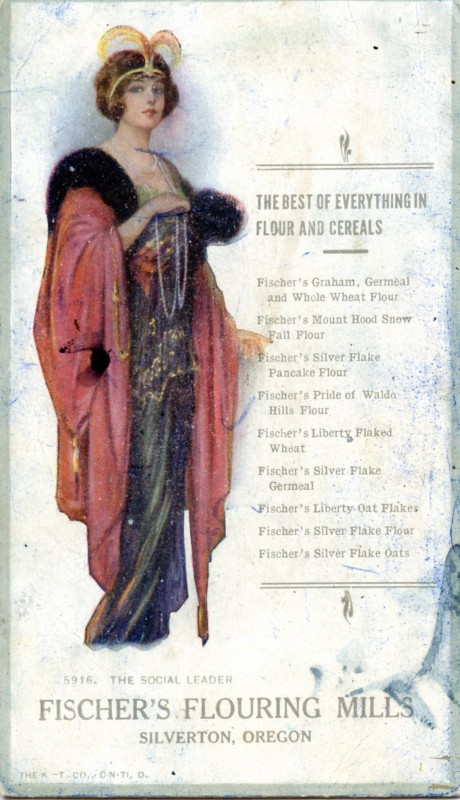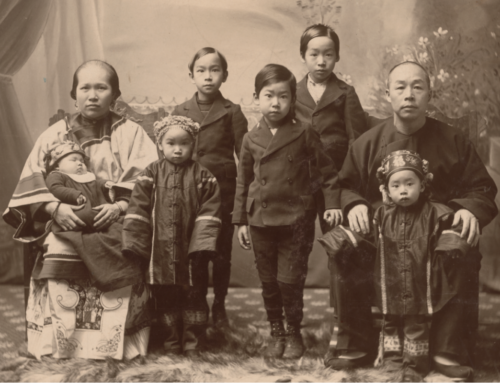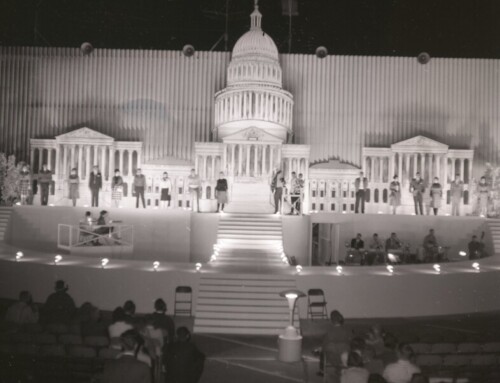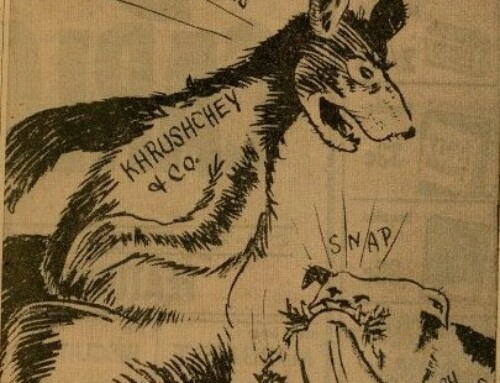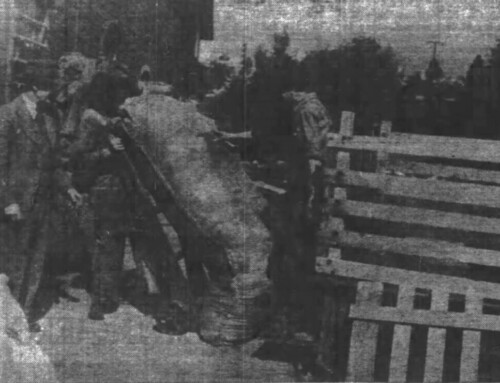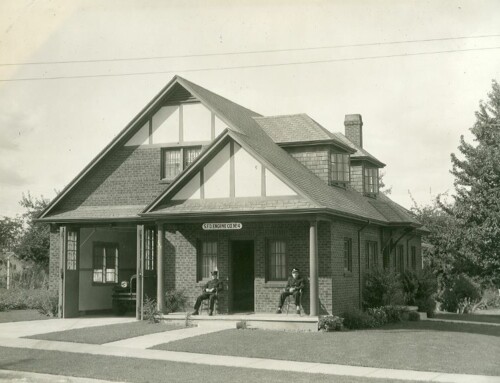A simple quilt pieced from the wool shirts and long johns in a housewife’s scrap bag. The backing made from re-purposed flour bags with brand names still visible, Crown Flour, Red and White, and L.H. Fischer, Silverton, Oregon. Donated from the estate of a longtime Willamette Cherry Grower employee, this quilt and its humble origins, simple materials and stitches is a touchstone to local history.
Each artifact considered for acceptance into the collection of the Willamette Heritage Center is submitted to a research and documentation process. Our curator and volunteers carefully research not only the artifact itself but its provenance. The story if you will, that connects it to our local history. With a quilt this entails researching the materials it is constructed from, the method of construction as well as the owners, and if possible the maker. With Quiltopia, Salem’s annual quilt show, coming up at the end of the month and an impending visit from the Oregon Quilt Project ladies, we dug right into the research for this humble quilt hoping to add it to the ambitious list for this year’s quilt documentation workshop.
First came a brief sojourn into the local city directories, census records, and online newspapers from which we gleaned a little information about the owners, Phyllis and Rolland Huffman, the longtime cannery employees. Phyllis was born in Washington state and moved to the Keizer area in 1942. Her husband Rolland was born in Oklahoma and came to Oregon with his family in 1914. They met while working for the Willamette Cherry Growers and were married in 1952. They are buried together in Belcrest Memorial Park. Humble, hard-working folk.
But truth be told, it was one of the flour sacks used in the quilt backing that really drew our attention. The material that still bore the label of L.H. Fischer, Silverton, Oregon. We know from textile history that the idea of reusing the cotton bags that flour, sugar, seed, and so forth were purchased in was not an unusual one. At a time when many rural families had limited resources, these bags were considered nearly as valuable as the items they contained. Because the Fischer name seemed familiar we started research with our own collections database where indeed we found some items – a series of trade cards used to advertise the L.H. Fischer Flouring Mill in Silverton, Oregon and a flour canister currently on display in the Parsonage on the grounds of the Willamette Heritage Center.
Our next stop along the detective hunt was google. Thanks to a little creative use of boolean characters and quotation marks, the story begins to unfold. First click of the mouse led us to the Silverton Commercial Historic District’s nomination form for the National Register of Historic Places. From this and a partner document, the Silverton, Oregon Historic Context Statement we learn that the Oregon Milling Company buildings at 400 S. Water St. were bought by Henry Fischer in 1898. The mill originally consisted of two wood-frame, gable roofed buildings that stood on the steep east bank of Silver Creek and ranged in height from 2-4 stories. A wood flume carried water from the small mill race upstream to the buildings below. Under the ownership of Henry Fischer, a successful mill owner in Corvallis, the mill was enlarged and remodeled to increase its production capacity. By the mid-1920s the mill, then powered by its own turbine-generated electricity, consisted of a large complex of milling, elevator, warehouse, and office buildings.
Henry’s son Louis Henry or L.H. an 1891 graduate of the Portland Business College had been trained and groomed by his father to take over management of the mill in 1900. Under his control the business “grew to extensive and profitable proportions” according to the Portrait and Biographical Record of the Willamette Valley published in 1903. Production was at its peak during World War I with the demands from war-torn Europe. And in the years following, the company’s reputation for quality flour products grew as it earned medals at the Trans-Mississippi Fair at Omaha, Nebraska and the Pan-American Exposition at Buffalo, New York. The product was also exhibited at the Osaki, Japan Exposition. During the height of production and prosperity Fischer Flouring Mill shipped to the markets of California and Alaska, South America, Havana, the Philippines, parts of Europe and the Orient according to local newspapers in the 1920s.
In 1932 however, the Depression hit Silverton and the Fischer Flour Mill collapsed financially, taking with it the life savings of many Silverton residents that had invested. After the collapse of the mill, a group of six or seven businessmen pooled funds and bought the property, eventually deeding it to the City of Silverton. The buildings were rented to another cannery for a time before falling into decay and eventually succumbing to a windstorm. The old Fischer Mill office at 408 S. Water St. is the lone survivor, the old mill buildings have long been replaced by the Silverton Public Library, the Silverton Country Historical Society and Southern Pacific depot. The Fischer Mill name lives on, due in part to its inclusion on the back of a simple scrap-pieced quilt.
This article was written by Kaylyn F. Mabey for the Statesman Journal where it was printed on 18 September 2016. It is reproduced here for reference purposes.
References:
- Entries for Louis Henry Fischer, Henry Fred Fischer and Thomas Skaife, Portrait and Biographical Record of the Willamette Valley, Oregon, Vol. 2, Chapman Publishing, 1903.
- Mill Race Chronology, www.mrwc.org/media/Mill-Race-Chronology-050815.pdf
- Images of America, Silverton, by Gus Frederick, Arcadia Publishing, 2011
- Silverton – National Register of Historic Places
- “Silverton loses historic landmark to wind, rain”, Statesman Journal (Salem, OR) 23 Nov 2011, p. 15



